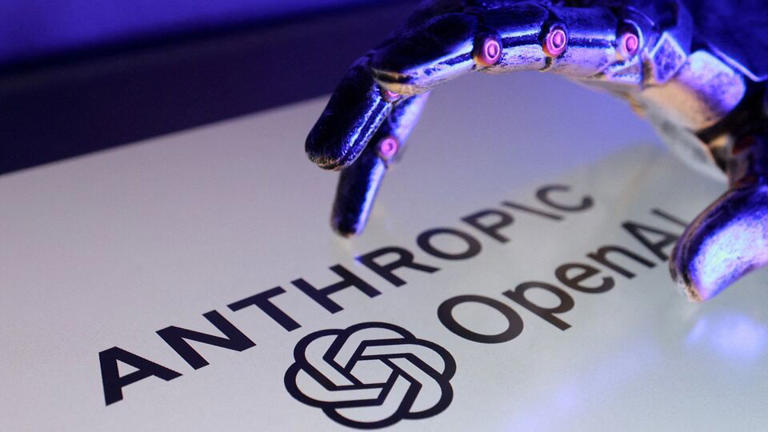Stories you may like
Apple used AI to uncover new blood pressure notification feature in Watch
Machine learning decodes signals from the wrist
The blood pressure alert feature uses machine learning to detect patterns in heart and movement data collected through the Apple Watch. Apple’s vice president of health, Sumbul Ahmad Desai, said that the company trained its AI models using information from a 100,000-participant study launched in 2019. The study analyzed the watch’s primary heart-related sensors, including photoplethysmography (PPG), to identify signals corresponding to traditional blood pressure measurements.
After multiple layers of algorithm refinement, Apple validated the results in a separate study of 2,000 participants. This study tested the AI’s ability to detect elevated blood pressure against clinically measured readings. Desai noted that privacy protections limit ongoing data collection outside of such structured studies, ensuring user data is not continuously harvested without consent.
FDA clearance and responsible health guidance
The U.S. Food and Drug Administration has cleared the feature for use, but it is not intended to replace standard blood pressure monitoring. The alert is designed to flag potential high blood pressure, encouraging users to confirm readings using a conventional cuff and to seek guidance from healthcare professionals.
High blood pressure affects over 1 billion people globally, with roughly half unaware of their condition. Early detection is critical, as hypertension contributes to heart disease, stroke, kidney disease, and other serious health complications. By providing proactive alerts through a wearable device, Apple aims to address gaps in early diagnosis.
How the watch predicts elevated blood pressure
The feature analyzes variations in heart rate, pulse waveform, and movement to predict elevated blood pressure. Apple reports that the AI model reduces false positives by integrating multiple sensor signals and filtering out noise from physical activity. Clinical advisors reviewed the feature to ensure that notifications are meaningful and do not generate unnecessary concern for users.
Although the system is not a replacement for medical evaluation, experts emphasize that even non-invasive alert systems can guide timely follow-up. Ami Bhatt, chief innovation officer of the American College of Cardiology, said that while wearable-based blood pressure alerts cannot fully replace clinical care, they could encourage users to seek proper assessment and intervention sooner.
Global access and integration with the Health app
Apple plans to offer the blood pressure notification feature in over 150 countries. The company integrates the alert into the existing Health app and watchOS interface, so users receive notifications directly on their wrist. Alerts include contextual guidance, recommending verification with a traditional blood pressure monitor and consultation with a healthcare professional if readings are elevated.
By leveraging hardware already present in Apple Watches, the feature avoids the need for additional devices or invasive measurements. This approach reflects broader trends in wearable technology, which increasingly combine AI analytics with existing sensors to expand health monitoring capabilities.
Potential impact on public health
Health experts note that large-scale deployment of AI-based alerts could contribute to earlier detection of hypertension and related cardiovascular conditions. In many regions, routine medical screenings are limited or underutilized. Wearable devices capable of detecting risk factors provide a complementary method to identify individuals who may require follow-up care.
Bhatt emphasized the potential benefits and limitations. While the feature can prompt timely medical visits, a lack of alerts should not be interpreted as an absence of risk. Continuous education about blood pressure and cardiovascular health remains essential, even with AI-powered monitoring tools.
Keeping user data private while providing insights
The notification feature is part of Apple’s broader strategy to integrate health monitoring with its wearable ecosystem. Users can view trends over time in the Health app, compare historical data, and share insights with healthcare providers. Apple also ensures that personal health data remains encrypted on the device and during iCloud backup, following strict privacy and security standards.
The AI system is designed to update automatically as Apple refines its algorithms. This approach allows Apple to improve detection accuracy over time while maintaining user control over personal data. The company has emphasized that AI computations are performed locally on the device whenever possible to minimize external data transmission.
What AI alerts mean for wearable technology
Apple’s blood pressure alert feature exemplifies a growing trend of AI-driven health capabilities in consumer devices. Experts predict that similar machine learning approaches could eventually detect other conditions, including arrhythmias, sleep disorders, and early signs of cardiovascular risk.
While medical professionals caution that AI alerts are not diagnostic tools, the ability to flag potential issues before they escalate represents a significant step in preventive healthcare. Long-term studies and real-world data collection will be essential for validating the effectiveness and accuracy of AI health monitoring.
Widespread implications for users and clinicians
As wearable health technology expands, discussions continue around equitable access, reliability, and interpretation of AI-driven alerts. Public health researchers suggest that devices like the Apple Watch can help address disparities in hypertension awareness, particularly in populations that may face barriers to routine healthcare.
Apple’s initiative also raises questions about user behavior and response. Notifications must be clear and actionable, guiding users to confirm readings and seek professional care rather than creating confusion or undue anxiety. Early feedback from clinical partners and user studies will inform updates and improvements to ensure that alerts are both meaningful and reliable.
AI uncovers notification for new blood pressure feature in Apple Watch
Apple’s integration of artificial intelligence to detect potential high blood pressure highlights the evolving role of wearable devices in health monitoring. By analyzing existing sensor data and delivering proactive alerts, the company provides a tool that complements traditional clinical care. The feature demonstrates how machine learning can enhance consumer health devices while maintaining regulatory compliance, user privacy, and actionable guidance for users.






User's Comments
No comments there.